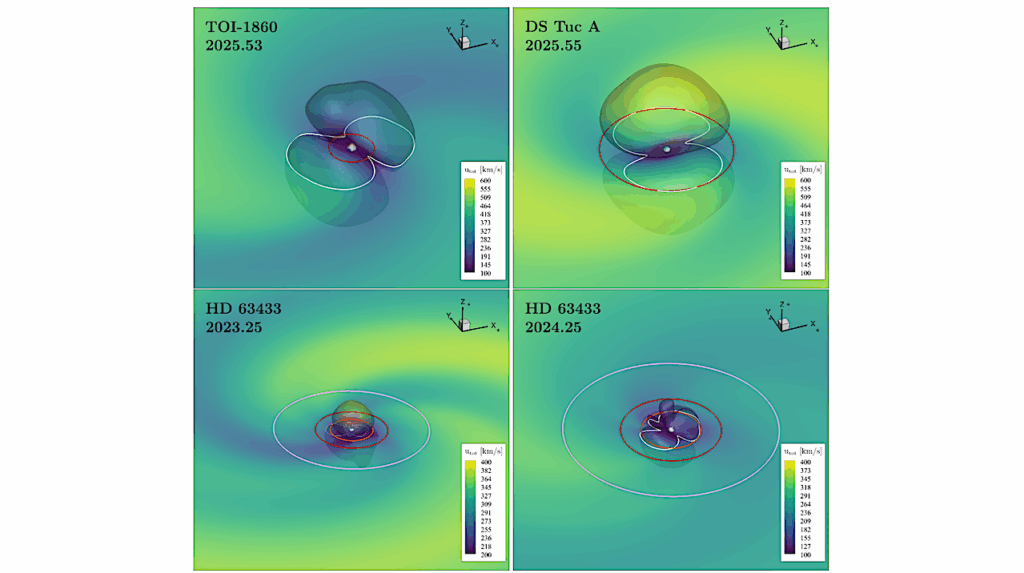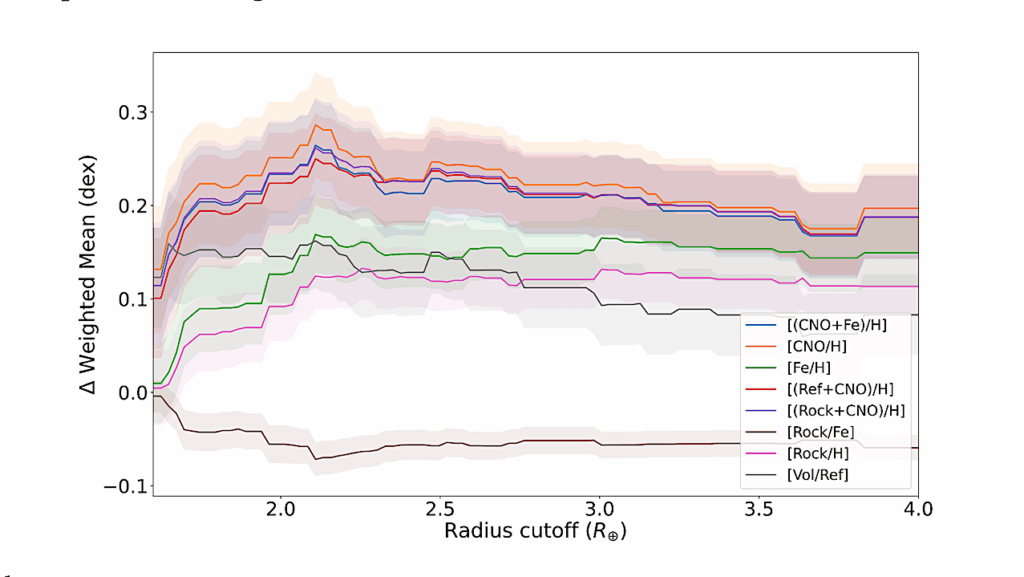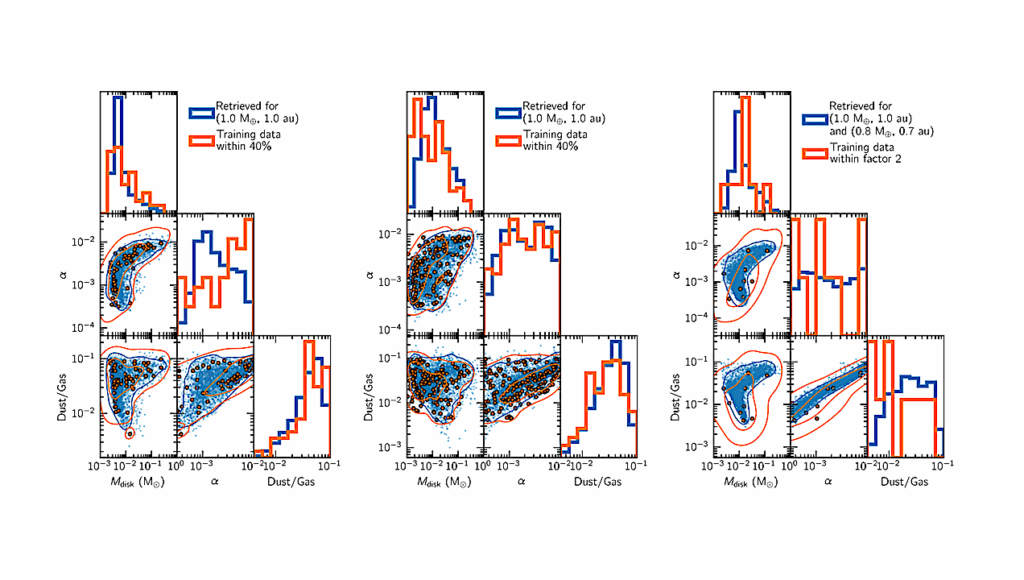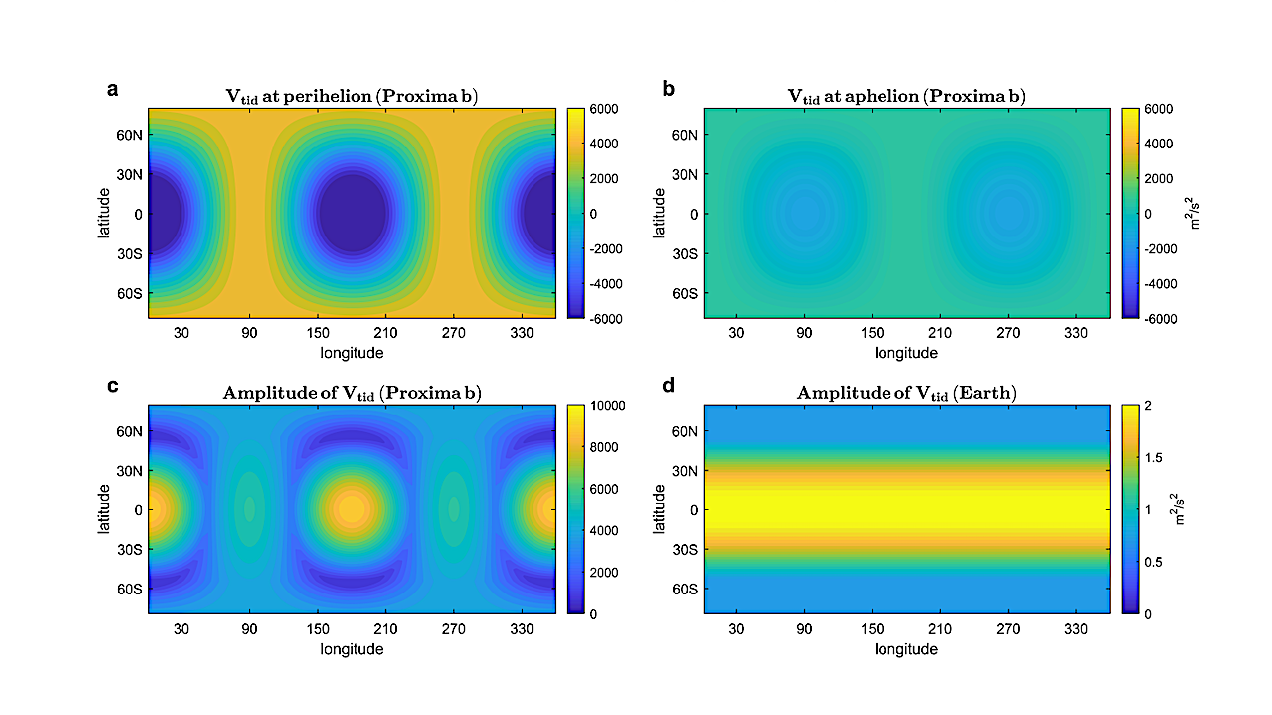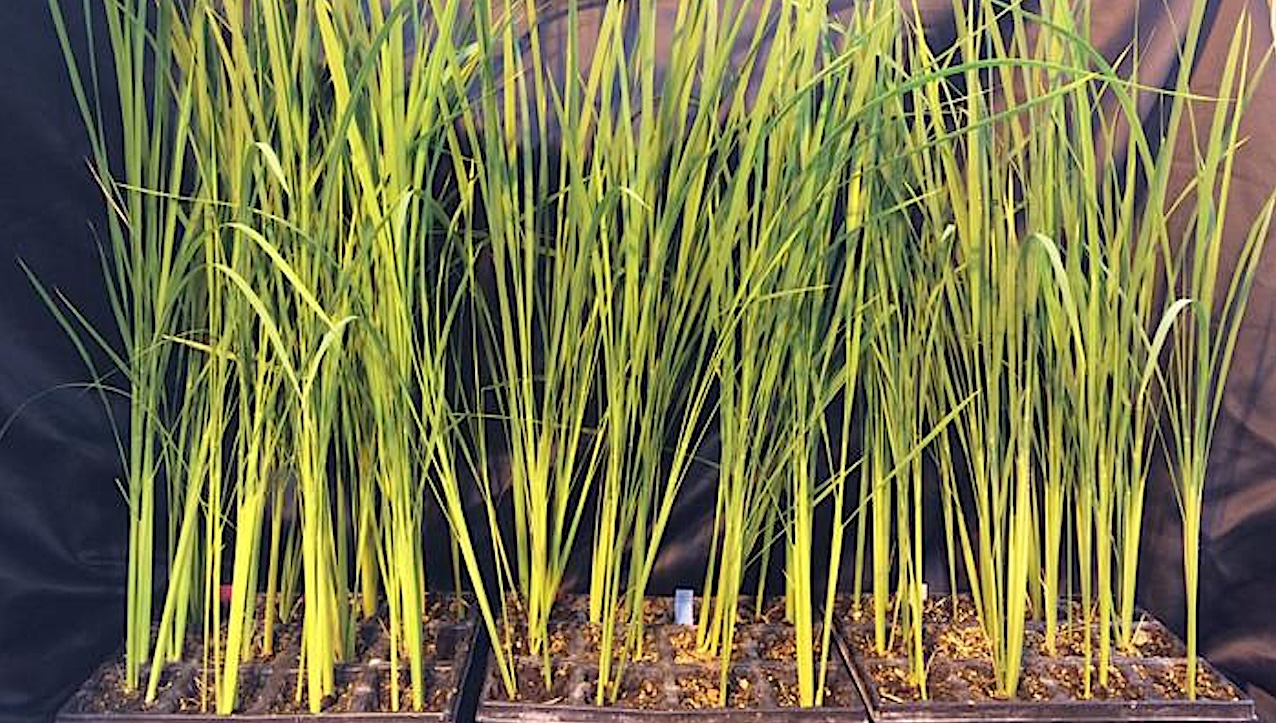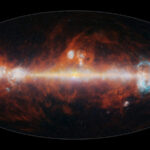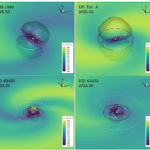Now Reading: JWST COMPASS: A NIRSpec G395H Transmission Spectrum Of The Super-Earth GJ 357 b
-
01
JWST COMPASS: A NIRSpec G395H Transmission Spectrum Of The Super-Earth GJ 357 b
JWST COMPASS: A NIRSpec G395H Transmission Spectrum Of The Super-Earth GJ 357 b


The atmospheric compositions ruled out by the Tiberius dataset binned at 60 pixels. In all sub-figures, the y-axis indicates the pressure at the top of an infinitely opaque layer (i.e., the surface or a cloud deck). Panels on the left consider atmospheres at chemical equilibrium at a given metallicity, while the panels on the right are simple H2O-H2 mixtures. Top panels show the statistical significance with which one can reject the null hypothesis that the difference between the observations and the model are produced purely by chance using a simple χ 2 test, and the bottom panels provide the 1, 2, and 3-σ contours of the posterior probability based on Bayesian retrievals. The black region is ruled out to > 99.7% confidence (i.e., > 3σ). To this high confidence, the JWST observations rule out metallicities 102.5× solar (i.e., MMW ≲ 10) for opaque pressure levels ≳ 10−4 bar regardless of the model-data comparison method (left). For H2O-H2 atmospheres (right) with opaque pressure levels ≳ 10−1 bar, the data rule out MMW ≲ 8.– astro-ph.EP
We present JWST NIRSpec/G395H transmission spectroscopy observations of GJ 357 b, a warm (Teq≈525 K) super-Earth (1.2 R⊕, 1.84 M⊕) orbiting a nearby M3-type star, with a median precision of 18 ppm and 27 ppm in NRS1 and NRS2, respectively.
These precisions are obtained by binning the spectrum into 53 spectroscopic channels with a resolution of 60 pixels (around 0.02 μm) each. Our analysis of the transmission spectrum reveals no detectable atmospheric spectral features. By comparing the observed spectrum with 1D forward models, we rule out atmospheres with mean molecular weights (MMW) lower than 8 g/mol to 3σ, as well as atmospheres with metallicities less than 300x solar.
The lack of a low MMW primary atmosphere is consistent with a primordial H2 rich atmosphere having escaped, given the planet’s ≳5 Gyr age, relatively low surface gravity (log g = 3.09), and its likely history of substantial incident extreme ultraviolet radiation.
We conclude that GJ 357 b most likely possesses either a high-MMW secondary atmosphere, perhaps rich in oxidized gases like CO2, or is a bare rock with no atmosphere. Upcoming scheduled JWST thermal emission observations could help distinguish between these scenarios by detecting signatures indicative of atmospheric heat redistribution or molecular absorption.
Jea Adams Redai, Nicholas Wogan, Nicole L. Wallack, Munazza K. Alam, Artyom Aguichine, Angie Wolfgang, Hannah R. Wakeford, Johanna Teske, Nicholas Scarsdale, Sarah E. Moran, Mercedes Lopez Morales, Annabella Meech, Peter Gao, Anna Gagnebin, Natasha E. Batalha, Natalie M. Batalha, Lili Alderson
Comments: Accepted to AJ
Subjects: Earth and Planetary Astrophysics (astro-ph.EP)
Cite as: arXiv:2507.07165 [astro-ph.EP] (or arXiv:2507.07165v1 [astro-ph.EP] for this version)
https://doi.org/10.48550/arXiv.2507.07165
Focus to learn more
Submission history
From: Jea Adams Redai
[v1] Wed, 9 Jul 2025 18:00:00 UTC (1,038 KB)
https://arxiv.org/abs/2507.07165
Astrobiology, Astrochemistry,
Stay Informed With the Latest & Most Important News
Previous Post
Next Post
-
 01From Polymerization-Enabled Folding and Assembly to Chemical Evolution: Key Processes for Emergence of Functional Polymers in the Origin of Life
01From Polymerization-Enabled Folding and Assembly to Chemical Evolution: Key Processes for Emergence of Functional Polymers in the Origin of Life -
 02Panasonic Leica Summilux DG 15mm f/1.7 ASPH review
02Panasonic Leica Summilux DG 15mm f/1.7 ASPH review -
 03Two Black Holes Observed Circling Each Other for the First Time
03Two Black Holes Observed Circling Each Other for the First Time -
 04How New NASA, India Earth Satellite NISAR Will See Earth
04How New NASA, India Earth Satellite NISAR Will See Earth -
 05And Thus Begins A New Year For Life On Earth
05And Thus Begins A New Year For Life On Earth -
 06Astronomy Activation Ambassadors: A New Era
06Astronomy Activation Ambassadors: A New Era -
07SpaceX launch surge helps set new global launch record in 2024












